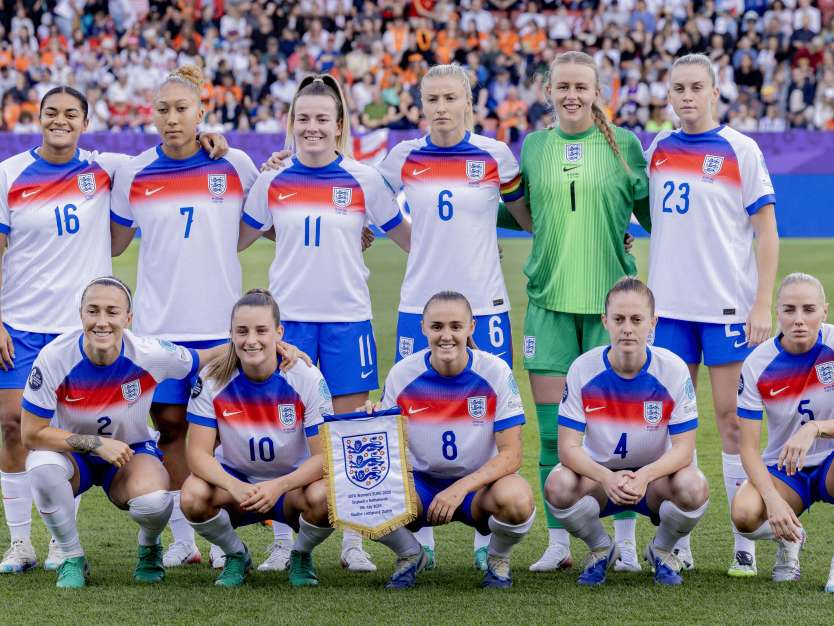
Levelling the Playing Field: How Media Coverage Fuels Participation in Women’s Football
Published on
by Izzy Fawcett
Participation and interest in women's football have boomed in recent years due to increased media coverage, with estimates suggesting this will only grow further after the UEFA Women’s EURO 2025.
In this article, we explore the impact of media coverage on the growth of women's football in the UK.
In this Insight:
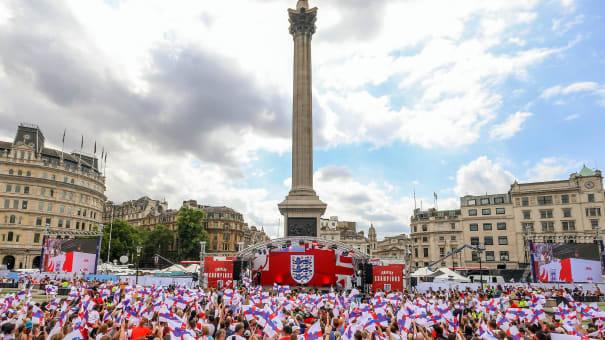
The Power of Visibility
In recent years, the surge in media coverage surrounding women's football has played a transformative role in elevating the sport’s profile and popularity. What was once a niche, often overlooked area of the game has now captured global attention, inspiring millions of girls and women to see football not just as a pastime, but as a viable career pathway.
Major tournaments, specifically the UEFA Women’s Euros and the FIFA Women’s World Cup, have served as turning points in reshaping public perception and increasing visibility. Quite simply, without media presence, many aspiring young athletes would never know the opportunities that exist or feel represented in the sport they love.
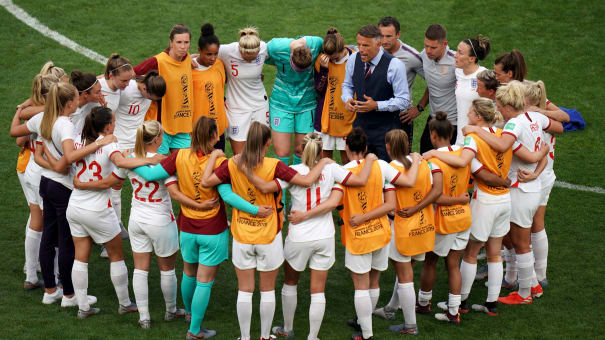
The Struggle for Recognition: Lack of Media Coverage
Women’s football has a long, and often underappreciated, history. Its origins trace back to the late 19th century, with informal matches and grassroots teams forming in towns and cities across the UK and Europe. However, progress was stifled for decades by gender norms and institutional barriers.
In the UK, the Football Association’s (FA) ban on women’s football in 1921 effectively erased the sport from public view, citing questionable medical and moral concerns. This ban lasted until 1971, a full 50 years, and its effects were long-lasting, leading to most football-playing countries around the world employing similar bans on the women’s game.
Even after the ban was lifted, women’s football received minimal institutional support and even less media coverage. Sponsorships were scarce, match attendances were low, and televised coverage was virtually non-existent. The difference between the men’s and women’s games was immense, and the lack of exposure made it nearly impossible for the sport to grow.
It wasn’t until the 2019 Women’s World Cup that a significant shift began to take place, with matches broadcast globally and media outlets finally giving the tournament the attention it deserved. This tournament planted the seeds for a media-driven renaissance in women’s football.
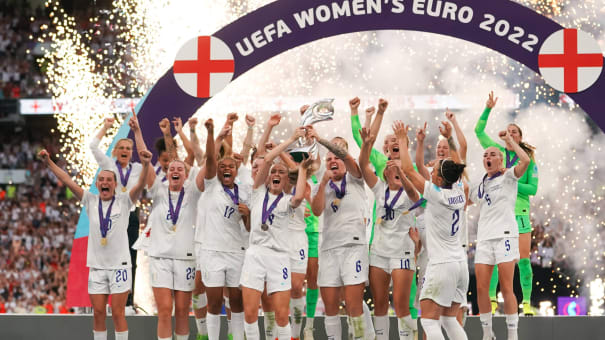
Participation Skyrockets Post-EURO 2022
The 2022 UEFA European Women’s Championship was a game-changer. Hosted in England and broadcast nationally by ITV and the BBC, it broke viewership records and ignited public passion. The tournament attracted remarkable broadcasting numbers, with the BBC reporting that there was an average of 11 million viewers per match in the UK alone, and a global audience of more than 365 million - numbers rarely seen before in the women’s game.
This surge in visibility wasn’t just symbolic; it translated into real-world impact. The FA has reported a 56% increase in female participation in football across the UK in the past four years. This spike is largely credited to the success of UEFA Women’s EURO 2022 and the momentum it created, which carried into the 2023 FIFA Women’s World Cup. That tournament, also covered jointly by BBC and ITV with the same broadcasting format as the men’s competition, further normalised women’s football as a mainstream sport.
According to the FA, there are now over half a million additional opportunities for women and girls to play football compared to 2020, ranging from local grassroots teams and school clubs to national league pathways. The visibility of role models on TV - athletes who look like them, sound like them, and come from similar backgrounds - has played a vital role in shifting cultural perceptions and boosting participation.
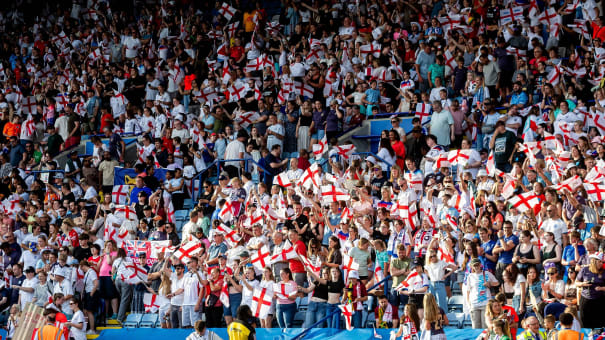
Looking Ahead: EURO 2025 and the Future of the Game
The 2025 UEFA Women’s European Championship, which kicked off earlier this month, is poised to reach even greater heights. It’s projected to attract a global TV audience of over 500 million - an astonishing leap that reflects how far the sport has come in such a short time.
With increased investment, improved infrastructure, and a generation of young fans who’ve grown up watching women’s football on primetime television, the conditions are primed for another wave of growth. As more women and girls gain access to football, whether through school programs, local leagues, or elite development pathways, participation is expected to continue climbing.
The relationship between media coverage and participation is clear: when people see it, they believe it. And when they believe in it, they take part. As UEFA Women’s EURO 2025 continues to unfold, it stands not only as a showcase of talent and competitiveness but also as a beacon for what’s possible when women's sport is given the platform it deserves.
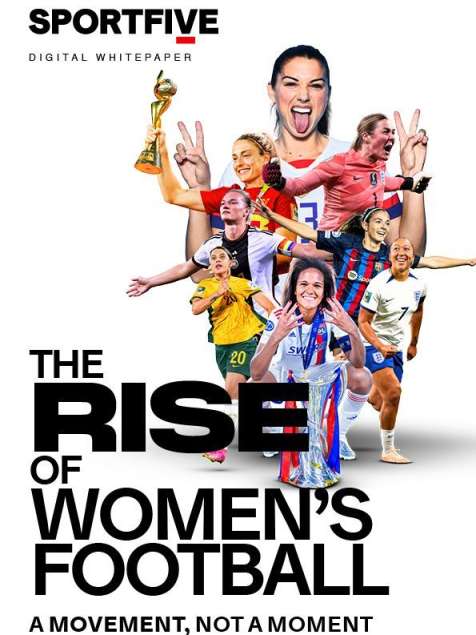
Your Next Read
Women's football is gaining popularity every day, and with the increased investment from broadcasters and sponsors, this growth will continue to inspire more girls and women to play the sport they love.
For more details about the rise of women's football and how investments have transformed the game, read our free whitepaper, The Rise of Women's Football: A Movement, Not a Moment.
Covering key areas within the women's game, including the role of media, fans, players and brands, the whitepaper seeks to underline the growth, change and opportunity in women's football unpacking its multi-faceted commercial landscape.
Frequently Asked Questions
Sponsorship is the financial support for a sporting event, organisation or athlete by an outside body, for the mutual benefit of both parties. At the professional level this tends to be by companies, to raise the profile of their brand by associating it with the athlete.
The company aims to generate brand awareness and customer recognition, whilst the event, organisation or athlete receives a boost in funding.
A popular example is a brand logo printed on a team shirt. Visibility is guaranteed, even more so in the modern world with social media and online highlights.
In the land of media and marketing rights today, there is no cookie-cut solution for brands, and a simple logo placement will not provide the sufficient return on investment (ROI) for sponsorship, nor does it give their target audience the “why?” - the reason to spend their money and engage with the product.
Companies investing in sports sponsorship need to look at the bigger picture to engage with fans and not rely on just one piece of inventory.
A brand partnership is a mutually beneficial agreement between two or more businesses. All parties agree to help one another by promoting and sponsoring each other or creating content together.
Brand partnerships aim to increase brand recognition and ultimately boost sales and customer loyalty.
In sports, co-branding exists, where two or more companies jointly promote their brands, services, and products through cross-marketing efforts.
This can include anything from social media posts, advertisements, and commercials to events and appearances by high-profile athletes and celebrities.
Partnership marketing is an important part of the sports industry. It involves collaboration between a sports team, league, or event and a brand or company. This collaboration can take many forms, such as sponsorship, product placement, or joint promotions. The goal of partnership marketing is to benefit both parties by increasing exposure, revenue, and brand recognition.
By partnering with a sports team or league, a brand can reach a large audience of fans who are passionate about their sport. This can lead to increased brand recognition and customer loyalty, as well as increased sales of particular products. Additionally, by offering special promotions or experiences, teams and brands can create a more memorable and enjoyable experience for fans.
When selecting the right type of partnership, teams and brands should consider factors such as brand values, fan demographics, and the overall image of the sport, to ensure it remains authentic whilst still connecting with the target audience.
Marketing is crucial in sports for several reasons. Firstly, it enhances the visibility and popularity of sports teams, athletes, and events, attracting a broader audience and increasing fan engagement. Effective marketing strategies help create a strong brand image, fostering a connection between fans and their favourite teams or athletes. This emotional connection often leads to increased fan loyalty and support, translating into higher ticket sales, merchandise purchases, and overall revenue for sports organisations.
Moreover, marketing in sports plays a pivotal role in securing sponsorships and partnerships. Brands are drawn to sports entities with a significant and engaged fan base, offering lucrative opportunities for sponsorship deals. These partnerships not only provide financial support but also contribute to the overall prestige and marketability of the sports brand.
In the contemporary landscape, digital marketing and social media have become integral components of sports marketing, allowing for real-time interaction with fans, personalised content delivery, and global reach. Social media platforms serve as powerful tools to amplify the sports narrative and engage with fans on a more intimate level.
Ultimately, successful sports marketing goes beyond promoting matches and events; it cultivates a culture, builds communities, and transforms sports into a compelling and marketable entertainment product, driving the industry's growth and sustainability.
The return on investment (ROI) of sports marketing and sports sponsorship is a measurement of the financial gains or losses relative to the costs incurred in these marketing activities.
Calculating ROI involves comparing the net profit generated by the marketing efforts against the total expenditure.
The formula for ROI is: ROI= (Net Profit ÷ Total Cost) x 100
Here's a breakdown of key components:
Net Profit is the revenue generated from sports marketing activities minus the associated costs. It includes direct sales, increased customer lifetime value, or any other financial gains attributed to the marketing efforts.
Total cost encompasses all expenses related to sports marketing and sponsorship, such as sponsorship fees, advertising costs, event promotions, and any additional expenditures.
The ROI formula is applied to determine the percentage return on the investment. A positive ROI indicates profitability, while a negative ROI suggests a loss.
Image objectives
Brands that are active in sports sponsorship are more likeable, more relevant and better trusted among fans. We call this the “emotional uplift”. Not only were we able to demonstrate this effect in a qualitative market research study, but we have also quantified it.
Awareness objectives
Whether among top target groups or the population at large, boosting brand awareness is a traditional strength of sponsorship. In an age of fragmented media consumption, it is becoming an increasingly frequent unique selling point in sport.
B2C customer retention
Sports sponsorship shortens distances and turns customers into lasting brand fans through promotions like money-can’t-buy experiences, loyalty incentives, exclusive benefits, prize draws, bonus programmes or sensation marketing.
Maintaining B2B contact
Professional infrastructure, special occasions and memorable experiences: the fervour surrounding sport makes for the perfect hosting platform for forging new business relationships and strengthening existing ones.
Tapping new target groups
Sponsorship can overcome dialogue obstacles and enables organisations to reach their target groups before and even after purchases are made, provided the platform has maximum target group overlap.
6. Sales and revenue objectives
Sponsorship affects revenue, be it via direct sales, branding at the point of sale, the expansion of sales networks, or one of the many new activation formats for sales promotion in sport.
Corporate social responsibility
Nutrition, health, youth empowerment and sustainability (to name a few): professional sport provides companies with a platform that impacts a range of economic sectors and can lead to authentic ways of implementing CSR measures.
Employer branding
Sponsorship is becoming an increasingly important tool in the so-called war for talent. It is used for recruiting new employees or retaining existing employees who have been with the company for a long time.
Enhanced Fan Experience: Improve the overall fan experience by offering exclusive content, access, or promotions through the partnership.
Innovation and Technology: Showcase technological advancements or innovations through sports partnerships, positioning the brand as forward-thinking and cutting-edge.
SPORTFIVE is a global sports marketing agency that specialises in sports rights, marketing, and entertainment. We work with sports organisations, clubs, and brands to create and optimise commercial opportunities in the sports industry. SPORTFIVE is involved in various aspects of sports business, including the sale of broadcasting rights, sponsorship and partnership management, stadium naming rights, and other marketing initiatives.
SPORTFIVE creates innovative, engaging solutions that are worthy of the incredible sports, athletes and partners we work with, and the passionate fans who follow them. Campaigns are built collaboratively, based on trust and transparency, and enabled by a deep understanding of the industry, the agency’s global reach, digital intelligence and creative courage.
The result is gamechanging sports partnerships that redefine standards in the sports and entertainment space.
SPORTFIVE believes in the power of five - bringing brands, rights holders, media platforms, fans and ‘us’ together through sport.
SPORTFIVE is a global sports marketing agency that specialises in various aspects of the sports and entertainment industry. The agency works with sports organisations, teams, and brands to optimise commercial opportunities.
One of SPORTFIVE's key areas of focus is the sale and management of sports media rights, including broadcasting and digital distribution deals. They negotiate and facilitate partnerships, sponsorships, and naming rights for sports entities, helping them enhance their brand value and revenue streams.
Additionally, SPORTFIVE provides expertise in marketing strategies, assisting clients in building strong connections with their target audiences. Their comprehensive approach spans across the sports business landscape, from media rights to sponsorship management, contributing to the overall growth and success of their clients in the dynamic world of sports marketing.